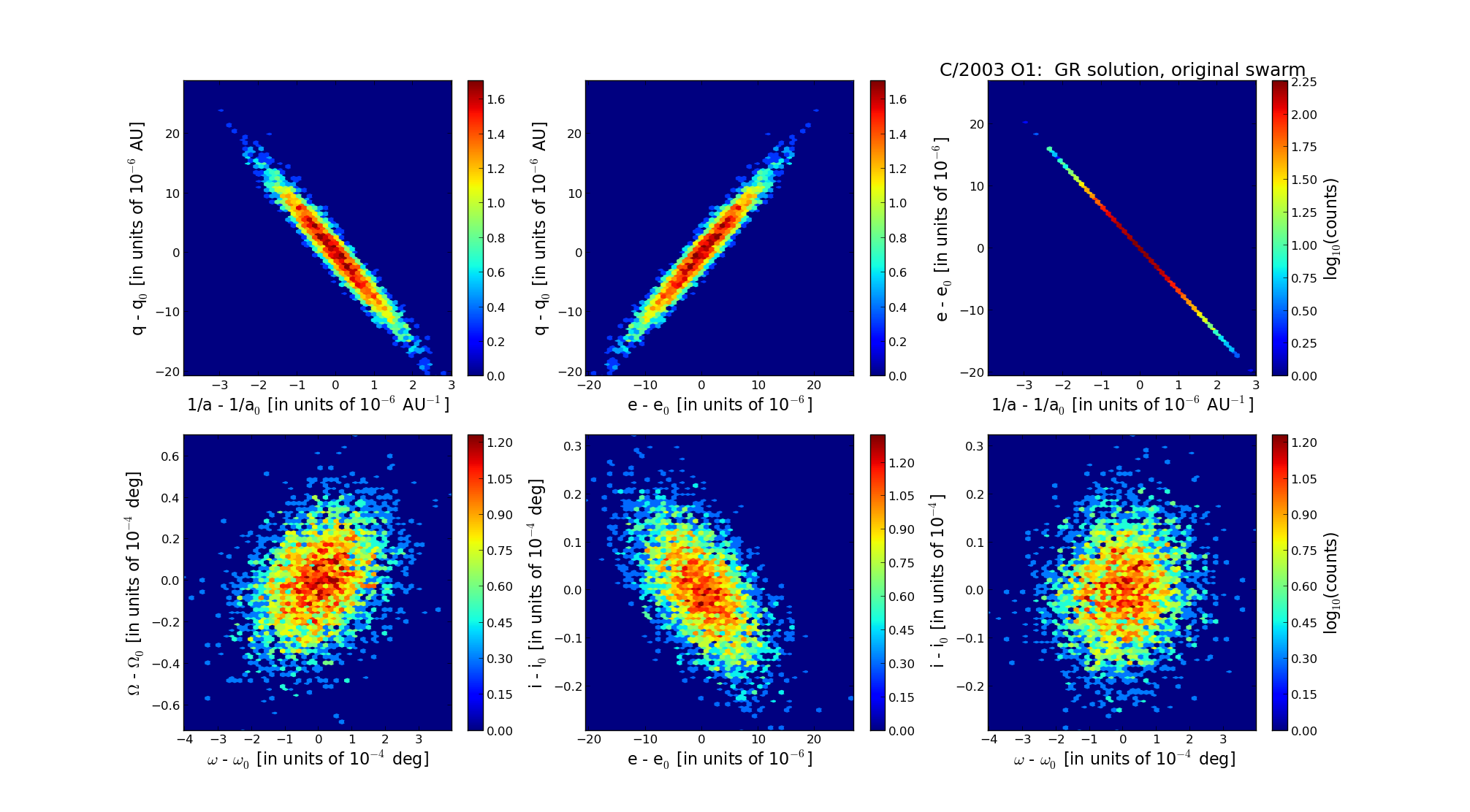| Solar System Dynamics & Planetology Group |
 |
C/2003 O1 LINEAR |  |
| Solar System Dynamics & Planetology Group |
 |
C/2003 O1 LINEAR |  |
| number of observations | 576 |
| number of residuals | 1132 |
| data interval | 2002 July 27 — 2006 Feb. 25 |
| rms [arcsec] | 0.53 |
| orbit quality class | 1a+ |
| Epoch (TT) | 20040316.0 | = JD 2453080.5 |
| time of perihelion passage (TT) | 20040317.205369 | ± 0.001326 |
| perihelion distance | 6.84737543 | ± 0.00000627 |
| eccentricity | 1.00154618 | ± 0.00000557 |
| argument of perihelion [deg] | 81.673255 | ± 0.000100 |
| longitude of the ascending node [deg] | 347.643862 | ± 0.000018 |
| inclination [deg] | 117.981596 | ± 0.000009 |
| inverse semimajor axis [10-6 au-1] | -225.81 | ± 0.81 |

| Epoch (TT) | 16930922 | |
| time of perihelion passage (TT) | 20040318.409817 | ± 0.001324 |
| perihelion distance | 6.84602108 | ± 0.00000628 |
| eccentricity | 0.99876093 | ± 0.00000557 |
| argument of perihelion [deg] | 81.744265 | ± 0.000100 |
| longitude of the ascending node [deg] | 347.582499 | ± 0.000018 |
| inclination [deg] | 117.993001 | ± 0.000008 |
| inverse semimajor axis [10-6 au-1] | 180.99 | ± 0.81 |

| Epoch (TT) | 23140730 | |
| time of perihelion passage (TT) | 20040318.258930 | ± 0.001325 |
| perihelion distance | 6.85105293 | ± 0.00000620 |
| eccentricity | 0.99881266 | ± 0.00000557 |
| argument of perihelion [deg] | 81.732625 | ± 0.000100 |
| longitude of the ascending node [deg] | 347.606280 | ± 0.000018 |
| inclination [deg] | 117.982590 | ± 0.000008 |
| inverse semimajor axis [10-6 au-1] | 173.31 | ± 0.81 |